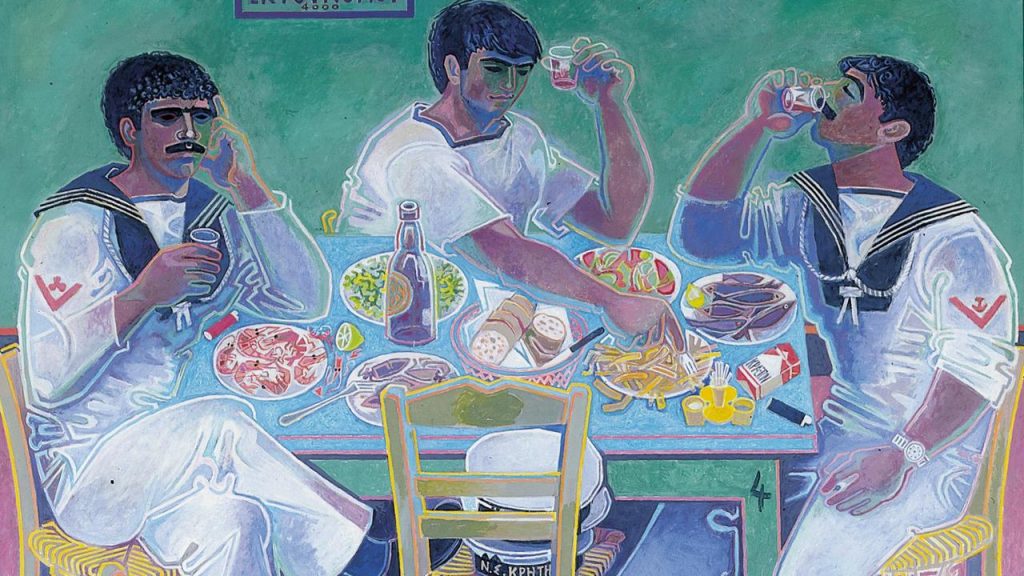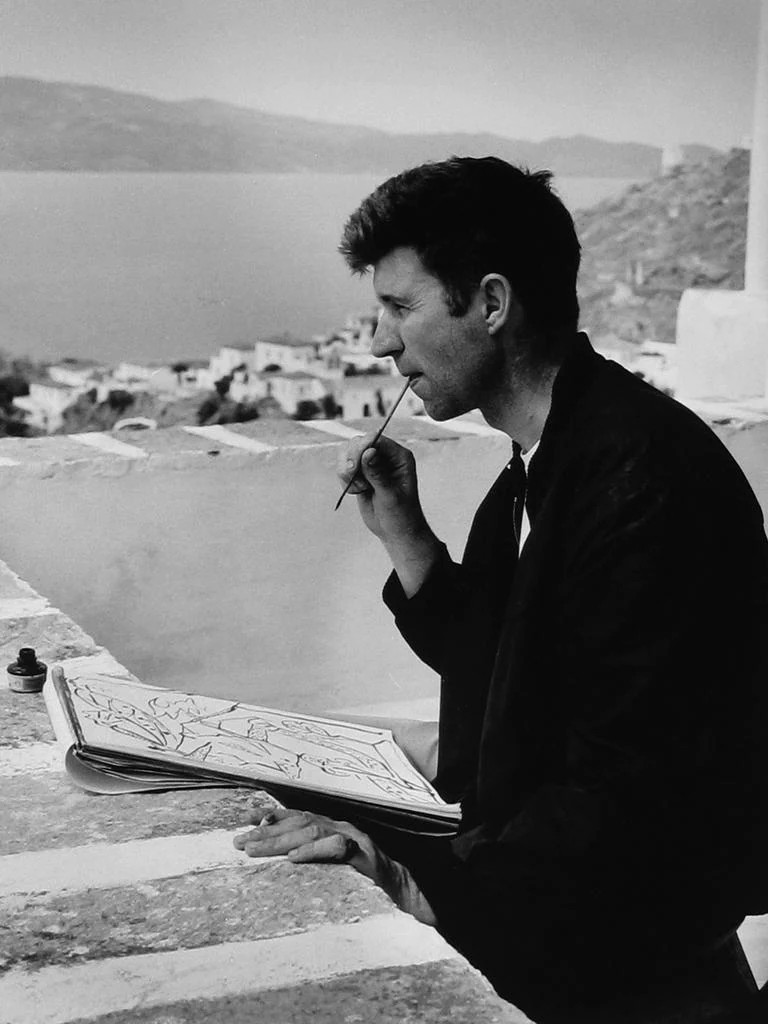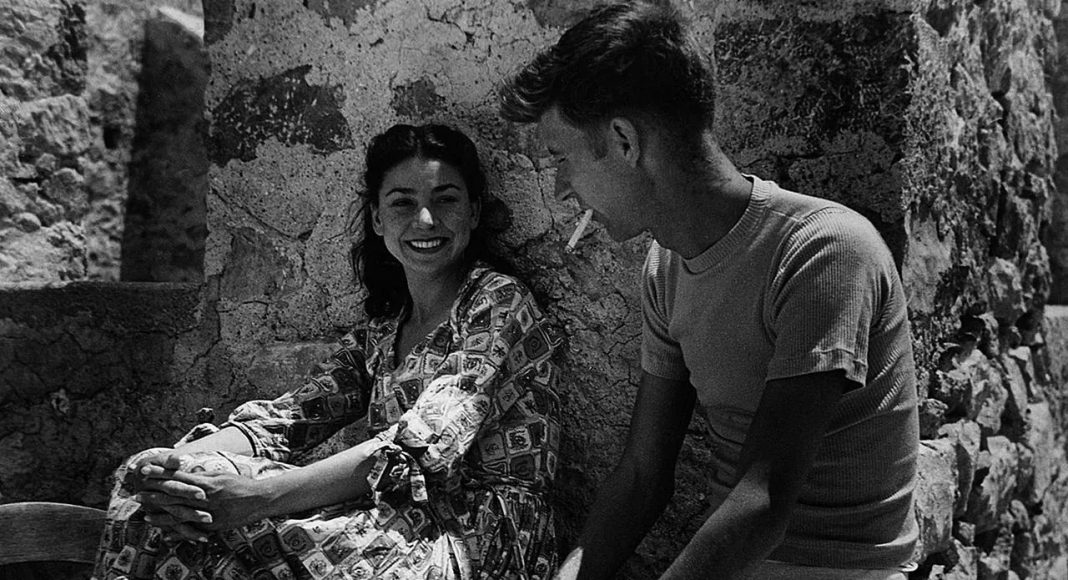Famous British painter John Craxton’s arrival in Greece was much like that of Gerald Durrell, who described his family’s move from Bournemouth to the island of Corfu in 1935, as like stepping out of a black and white film and into colour.
Craxton would be less famous over time than his School of London contemporaries, but when it comes to swashbuckling adventure and exuberance of both life and work, few bested this Briton abroad.
“John Craxton’s paintings in the Mediterranean are full of delight and joy – pleasure in the people and the landscape and the animals,” said his friend David Attenborough. “Joy is somewhat out of fashion these days, but my goodness it’s precious.”
The fourth of six children, Craxton was born in 1922 to the musician Harold Craxton and his wife Essi.

In his 1941 army medical, Craxton was delighted to hear that he’d “be as much use to the war effort as a three-legged horse”. Collins describes his work at the time as evolving rapidly. “The influence of Palmer and Blake was eclipsed by those of Sutherland, Miró and Picasso, and information from the natural world was being transformed by greater distillation.”
European travel was still not possible when the war ended, so with itchy feet John and Lucien journeyed to the Scilly Isles, an Atlantic archipelago off the coast of Cornwall, in 1945. It proved a turning point in Craxton’s work – a precursor of Aegean light and joy seeping into pictures such as Red and Yellow Landscape. They met the 17-year-old beauty Sonia Leon on the Scillonian ferry but Craxton would not begin Portrait of Sonia until 1948, painting from memory à la Graham Sutherland, in Greece.
“His personal charm and painterly gifts meant that he was able to live his life pretty much as he wished, and to weather many scrapes. When his pictures failed to sell, family and friends helped him. He thrived in Greece in part because, before the era of mass tourism, it was tremendously cheap,” says Collins.

The Greek Civil War was in full swing when Craxton finally arrived there in 1946. Not that he would have noticed. He wrote to EQ Nicholson: “I can’t tell you how delicious this country is and the lovely hot sun all day and at night tavernas: hot prawns in olive oil and great wine and the soft, sweet smell of Greek pine trees. I shall never come home. How can I?” Lady Norton provided him with accommodation at the British Embassy.”
If Craxton had been searching for a style, he most certainly found it on Poros. Lodging with – and virtually adopted by – the Mastropetros family in a lovely 19th-century house overlooking the harbour, he realised his first Greek landscape, Hotel by the Sea (1946).
Bathed in the brilliant light of the Aegean, the geometry of sea, land and sky is rendered in faceted planes of jewel-like hues and dazzling whites – the antithesis of grey London. A goat foraging on a fig tree honours Pan, the “horny Greek god of shepherds, flocks and wildness”. Lawrence Durrell declared Poros “the happiest place I have ever known” and in a similar spirit, according to Collins, Hotel by the Sea was Craxton’s declaration of love for Greece.
Read about all about John Craxton’s Greek adventure on The Australian here: https://bit.ly/3jhdibx

